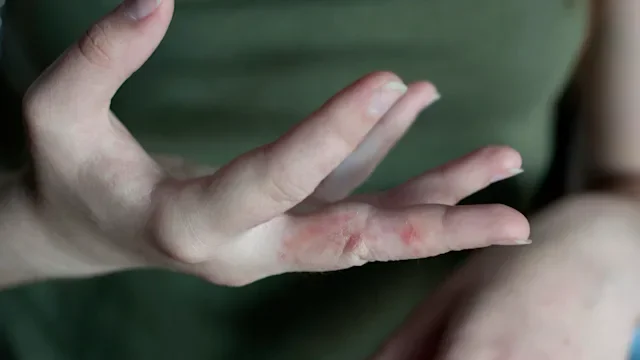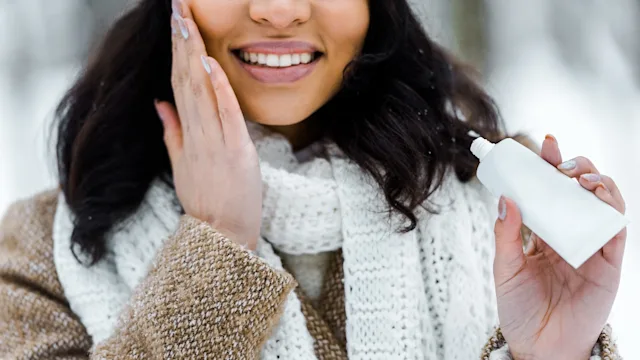Key takeaways:
Ice facials involve gliding ice –– or skincare tools like an ice roller –– across the skin for several minutes.
Cold therapy may temporarily reduce inflammation, brighten skin tone, and ease acne.
If done correctly, skin icing can be a low-risk enhancement. But people with inflammatory skin conditions should talk to a healthcare provider before trying ice facials.
Icing your face in the morning might sound like a way to jolt yourself awake. But can it help you achieve glowing skin, too?
Fans of ice facials certainly think so. They report a wide range of benefits, from reducing puffiness to banishing wrinkles. But is there science behind these claims? Find out if an ice facial is right for you, the pros and cons, and how to safely do one yourself.
What is an ice facial?
An ice facial is a popular beauty trend that involves massaging ice on your face. It’s a type of cryotherapy treatment that uses cold temperatures to address concerns like inflammation.
Search and compare options
While many estheticians offer ice facials, products like ice rollers make the treatment easily accessible at home. Don't have any fancy skincare tools? Many people just wrap ice cubes in a towel.
What are the benefits of an ice facial?
Fans of the ice facial use it for a host of benefits, such as reducing oiliness, shrinking large pores, and minimizing the appearance of wrinkles. But there is a lack of scientific evidence to support these claims. So far, most studies of cold therapy involve whole-body cold exposure or a local cold exposure (like around a joint).
Here’s what we know about cold therapy and how it could affect the skin.
Lowers inflammation and swelling
Cold temperatures can reduce inflammation and swelling. Exposure to the cold narrows blood vessels at the surface of the skin to restrict blood flow. It also lowers inflammatory substances in your blood. That’s why cold compresses are a common at-home treatment for puffy eyes. So an ice facial could help limit the appearance of under-eye bags and puffiness.
Reduces redness and brightens skin tone
By reducing blood flow to your skin, cold therapy may make your face appear less flushed. As your skin warms up after application, the blood vessels dilate gradually, which can make your skin appear brighter.
Eases acne pain
Experts do not recommend popping your pimples because it can cause pain, inflammation, and more pimples. Instead, you can try easing pain and irritation from cysts and other acne symptoms with ice.
Read more like this
Explore these related articles, suggested for readers like you.
It's worth noting that any anecdotal or science-backed benefits of ice facials are temporary, and results will fade shortly after application. But while there's a need for more research on the specific effects of facial icing, the skincare trend is inexpensive and accessible. That's why so many people have added ice facials to their at-home beauty routines.
What are the risks of ice facials?
When done correctly, ice facials are well tolerated by most people. But the skincare practice has some risks. For example, ice facials may cause redness or other signs of irritation. Leaving the ice on your skin for too long can result in burning, tingling, and frostnip.
It can also aggravate existing skin conditions. So it's best to talk to a dermatologist first if you have any of the following:
Broken capillaries (small blood vessels in the skin)
Recent facial procedures, such as a chemical peel, laser therapy, or microdermabrasion
How do ice facials compare to other at-home skin treatments?
If you want to achieve healthier-looking skin, various at-home methods may provide some of the same benefits you want to achieve with skin icing.
Hyaluronic acid is an evidence-based skincare ingredient for increasing hydration.
Some oral dietary supplements like collagen have been shown to boost skin hydration and reduce wrinkles.
Gua sha may help relieve tension, improve circulation, and reduce pain and inflammation.
Cold compresses may work just as well as ice and provide a better alternative for people with skin conditions like rosacea.
Tips for how to do an ice facial at home
If you’re ready to give yourself an ice facial, here are some general guidelines to follow.
Wash your face and hands to ensure a clean environment.
Always use ice from a sanitized ice tray and clean the tray before refilling again.
Wrap several ice cubes in a clean cloth to avoid direct contact with your skin.
Apply moisturizer or a hydrating serum beforehand, especially if you have dry or dehydrated skin.
Glide the ice cubes or ice roller across your face, making sure to cover your forehead, cheeks, nose, chin, jaw, and under your eyes.
Keep the ice cube constantly moving. If you leave it in one spot for too long, it can damage the skin.
Gently pat your skin dry with a clean towel.
Moisturize or apply hydrating serums before moving on in your skincare routine.
Should you buy an ice roller?
Ice rollers are a more convenient way to reap the benefits of an ice facial with less mess. But they're not required for an at-home ice facial. While the skin icing process is generally the same as using ice cubes, remember these tips when using an ice roller.
Store your ice roller in the fridge, keeping it clean and sanitized.
Use the roller in an upward motion to avoid pulling your skin down.
Don't apply any pressure when using a facial ice roller. Instead, let it gently glide across your skin.
Never use the tool across your eyelids, and be extra careful when rolling underneath your eyes.
How often should you have an ice facial?
There's no official recommendation for how often you should have an ice facial. If you do it at home, start with a shorter period of skin icing to test your skin's reaction to cold therapy. Then gradually work up to 2 to 4 minutes once a day if you don't have any adverse reactions. This careful, limited application can help you avoid risks.
Skin icing results are temporary, so it might be a useful way to freshen up in the morning or before an event. Plus, cold temperatures have been shown to make you feel more alert. So skin icing can be a good part of your morning routine.
The bottom line
While many of the benefits are anecdotal, ice facials can temporarily reduce inflammation and puffiness like under-eye bags. And they may soothe pain from acne. Talk to a dermatologist about long-term strategies to address your skincare concerns.

Why trust our experts?



References
American Academy of Dermatology Association. (2022). Pimple popping: Why only a dermatologist should do it.
Bouzigon, R., et al. (2021). Cryostimulation for post-exercise recovery in athletes: A consensus and position paper. Frontiers in Sports and Active Living.
De Miranda, R. B., et al. (2021). Effects of hydrolyzed collagen supplementation on skin aging: A systematic review and meta-analysis. International Journal of Dermatology.
Draelos, Z. D., et al. (2021). Efficacy evaluation of a topical hyaluronic acid serum in facial photoaging. Dermatology and Therapy.
Johns Hopkins Medicine. (n.d.). How to get rid of bags under your eyes.
Malanga, G. A., et al. (2015). Mechanisms and efficacy of heat and cold therapies for musculoskeletal injury. Postgraduate Medicine.
National Rosacea Society. (2016). Q&A: Skin sensitivity & ice cubes. Rosacea Review.
Rho, N. K. (2023). Revisiting the role of local cryotherapy for acne treatment: A review and update. Journal of Clinical Medicine.
Sun, Q., et al. (2022). Effectiveness of dietary supplement for skin moisturizing in healthy adults: A systematic review and meta-analysis of randomized controlled trials. Frontiers in Nutrition.
Topp, R., et al. (2011). Comparison of the effects of ice and 3.5% menthol gel on blood flow and muscle strength of the lower arm. Journal of Sport Rehabilitation.

















